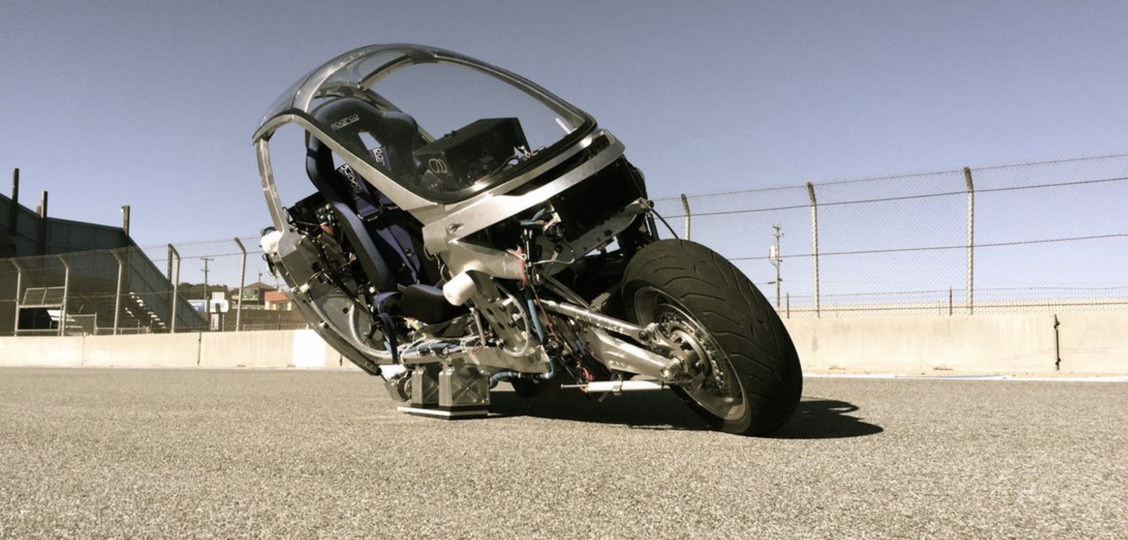
San Francisco startup Lit Motors has raised $1.6 million through a Wefunder equity crowdfunding campaign to advance development of its self-balancing electric vehicle, the C-1. The funding round drew support from over 1,000 investors, demonstrating considerable interest in the company’s distinctive approach to urban transportation.
The C-1 represents an unusual hybrid concept: a fully enclosed, two-wheeled electric vehicle that aims to deliver motorcycle agility with car-like safety and comfort. The vehicle includes standard automotive safety features like seatbelts, airbags, and a steel/aluminum chassis. CleanTechnica first covered the C-1 back in 2012, though a planned 2014 launch never materialized. With this new funding, there’s renewed hope that a production model might finally reach the market.
What sets the C-1 apart is its gyroscopic stabilization system, which keeps the vehicle upright even when stationary or during a collision. This technology, borrowed from aerospace engineering, gives the C-1 stability that’s virtually unheard of in two-wheeled vehicles. The result is an enclosed electric motorcycle that handles like a car while maintaining the compact footprint that makes motorcycles ideal for dense urban areas.
The vehicle bridges the gap between cars and motorcycles by combining automotive safety features with electric motorcycle efficiency. The enclosed cabin offers car-like amenities including climate control and digital displays, providing riders with weather protection and security. Its narrow profile still allows for easy parking and lane splitting, addressing common urban frustrations like traffic congestion and limited parking.
Lit Motors projects the C-1 will achieve speeds exceeding 100 mph with a range of up to 200 miles per charge, depending on the final battery configuration. These specifications match many current electric motorcycles while adding the protection and comfort of an enclosed cabin. The combination of energy efficiency, low-maintenance electric drive, and advanced safety features could position the C-1 as a compelling alternative to both conventional motorcycles and compact electric vehicles.
The broader implications are significant. The C-1 could help reshape urban mobility by reducing vehicle size without compromising safety. As cities face increasing congestion and governments push for lower emissions, vehicles like the C-1 offer an appealing solution: low-carbon, high-efficiency transportation that maintains usability and rider security. Success in bringing the C-1 to market could help define the next generation of personal transportation.
Lit Motors plans to use the new funding to develop a production-ready prototype in partnership with German engineering firm Ideenion. The prototype will undergo extensive testing to meet European New Car Assessment Programme standards, with production targeted for 2029 and scaling to 300,000 units annually by 2034.
The company reports more than 1,450 pre-orders for the C-1, suggesting strong market demand. Lit Motors’ strategy leverages an extensive patent portfolio and a team of experienced engineers from companies including Audi and Raytheon. This successful funding round represents a crucial milestone as Lit Motors moves closer to delivering its vision of sustainable and efficient urban transportation.
Sign up for CleanTechnica’s Weekly Substack for Zach and Scott’s in-depth analyses and high level summaries, sign up for our daily newsletter, and/or follow us on Google News!

Whether you have solar power or not, please complete our latest solar power survey.
Have a tip for CleanTechnica? Want to advertise? Want to suggest a guest for our CleanTech Talk podcast? Contact us here.
Sign up for our daily newsletter for 15 new cleantech stories a day. Or sign up for our weekly one on top stories of the week if daily is too frequent.
CleanTechnica uses affiliate links. See our policy here.
CleanTechnica’s Comment Policy


